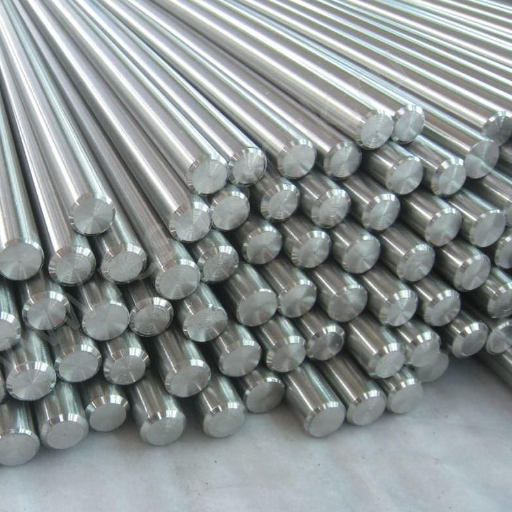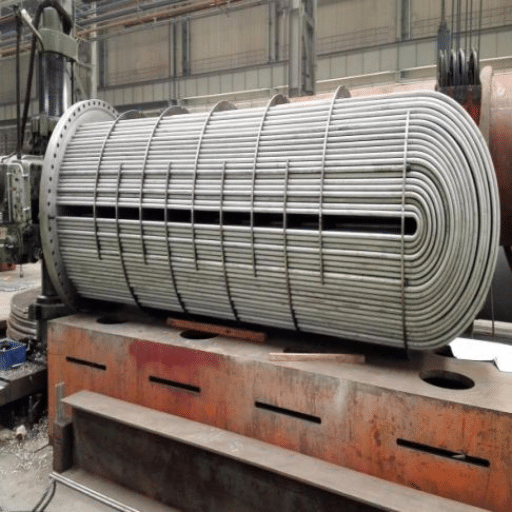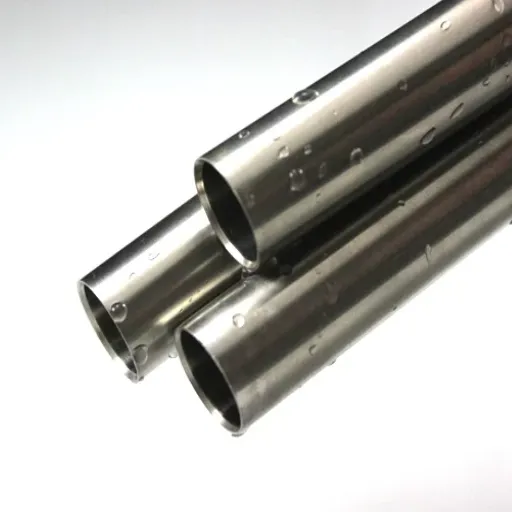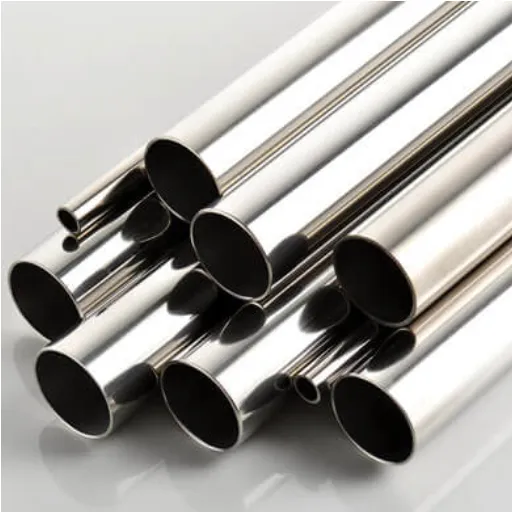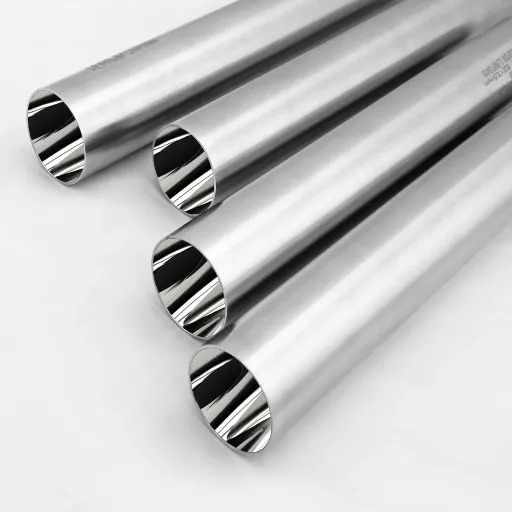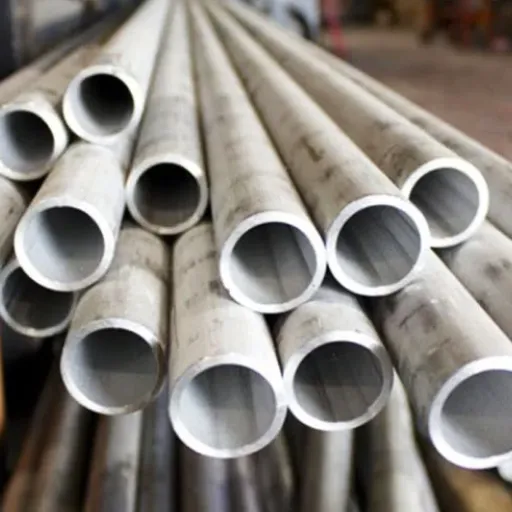Understanding 202 Stainless Steel
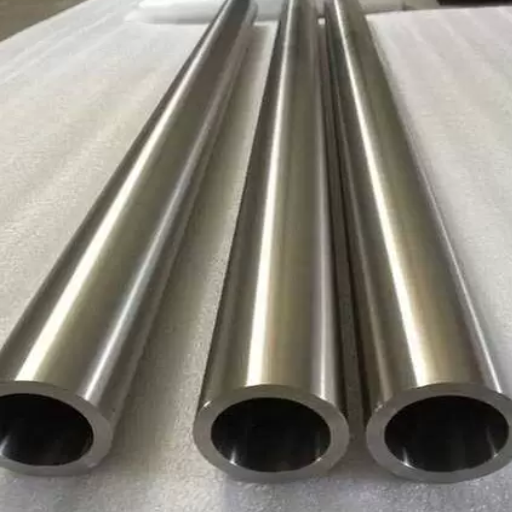
Chemical Composition of 202 Stainless Steel
202 stainless steel is a chromium-nickel-manganese alloy of the 200 series of austenitic stainless steel. Its chemical composition typically consists of:
- Chromium: 16-18%
- Nickel: 4-6%
- Manganese: 7-10%
- Carbon: Maximum 0.15%
- Nitrogen: Trace amounts
The high manganese content sets this grade apart, making it a cost-effective option compared to 300-series stainless steels that rely heavily on nickel content. The corrosion resistance of the alloy is due to chromium, which creates a thin but tenacious oxide layer on the surface, acting as a barrier against environmental degradation.
Physical and Mechanical Properties
The balanced composition of 202 stainless steel provides excellent strength and ductility characteristics:
| Property | Value | Description |
|---|---|---|
| Tensile Strength | 515-860 MPa | Can withstand significant stress before permanent deformation |
| Yield Strength | 275 MPa | Suitable for load-bearing applications |
| Elongation at Break | 40-50% | Good ductility for forming and shaping processes |
| Hardness Rating | 95-200 HB | Resistance to surface deformation |
| Density | 7.85 g/cm³ | Consistent with other austenitic stainless steels |
Unique Features of Grade 202
Grade 202 stainless steel offers several distinctive characteristics that make it valuable for specific applications:
- High nitrogen content: Enhances strength and durability
- Excellent workability: Easy to fabricate into sheets, pipes, and bars
- Cold working ability: Mechanical properties improve after processing
- Cost-effectiveness: Lower nickel content reduces overall material costs
- Moderate corrosion resistance: Suitable for benign to moderately corrosive environments
Comparative Analysis: 202 vs 304 Stainless Steel
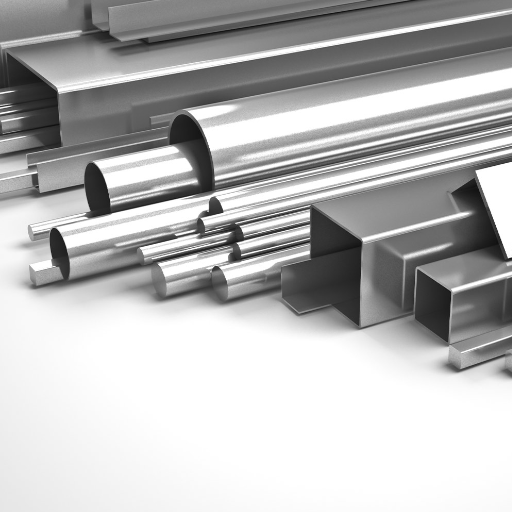
Comprehensive Comparison Table
| Aspect | 304 Stainless Steel | 202 Stainless Steel |
|---|---|---|
| Durability | High | Moderate |
| Nickel Content | 8-10.5% | 4-6% |
| Manganese Level | Low | High (7-10%) |
| Affordability | Expensive | Economical |
| Joining Ease | Excellent | Good |
| Shaping Ability | Superior | Adequate |
| Tensile Power | Moderate | High |
| Magnetic Nature | Non-magnetic | Slightly magnetic |
| Thermal Tolerance | Better | Moderate |
| Usage Areas | Premium applications | Budget-conscious projects |
Corrosion Resistance Comparison
| Aspect | 304 Stainless Steel | 202 Stainless Steel |
|---|---|---|
| Overall Resistance | Superior | Moderate |
| Chloride Resistance | Excellent | Fair |
| Rust Risk | Low | Higher |
| Marine Environment | Suitable | Not ideal |
| Acid Tolerance | High | Moderate |
| Maintenance Requirements | Minimal | Regular |
| Expected Longevity | Longer | Shorter |
| Suitable Environment | Harsh conditions | Mild conditions |
Weldability of 304 and 202 Grades
Grade 304:
- Excellent weldability with minimal cracking risk
- Compatible with TIG, SMAW, and MIG welding processes
- Generally doesn’t require post-weld annealing for thin welds
- Preferred for applications requiring high weld reliability
Grade 202:
- Satisfactory weldability but requires more attention
- Higher manganese content may cause increased porosity
- Requires careful heat input control and interpass temperature management
- May need post-weld cleaning to maintain corrosion resistance
Benefits of Using 202 Stainless Steel

Cost-Effectiveness of Grade 202
Grade 202 stainless steel offers significant economic advantages through its strategic alloy composition:
- Reduced nickel content: Substitution with manganese and nitrogen significantly lowers material costs
- Enhanced manufacturability: Easy forming, machining, and fabrication reduce production expenses
- Competitive pricing: Typically priced lower than Grade 304, providing budget-friendly alternatives
- Mass production suitability: Ideal for high-volume manufacturing applications
Durability in Various Environments
Environmental performance characteristics:
- Mild environments: Excellent performance with limited exposure to moisture and chemicals
- Industrial settings: Good durability with proper maintenance and protection
- Coastal areas: Limited suitability due to chloride sensitivity
- Controlled conditions: Extended lifespan of 20-30 years with proper care
Applications in Manufacturing and Construction
- Kitchen Equipment and Food Processing Tools
- Kitchen utensils, sinks, and countertops
- Food-grade applications with smooth surface finish
- Cost-effective alternative to higher-grade stainless steels
- Architectural Components
- Interior construction and semi-outdoor applications
- Decorative railings, gates, and cladding
- Design flexibility with aesthetic appeal
- Automotive Industry
- Exhaust systems and structural reinforcements
- Decorative trims for lightweight vehicles
- Maintains performance while reducing production costs
- Storage Solutions
- Storage tanks and containers for mild chemicals
- Liquid storage applications
- Good structural integrity under controlled conditions
- Industrial Equipment
- Industrial shelving, trolleys, and machinery components
- Withstands moderate operational stresses
- Easy cleaning and maintenance requirements
Maintenance Tips for 202 Stainless Steel
Preventing Rust and Corrosion
Follow these essential maintenance practices to maximize the lifespan of 202 stainless steel:
- Regular Cleaning: Use neutral cleaners or mild detergent solutions daily to remove contaminants
- Avoid Chlorides: Minimize exposure to saltwater or de-icing salts; rinse immediately if contact occurs
- Protective Coatings: Apply clear lacquer or silicone-based coatings in humid or polluted environments
- Proper Storage: Store in cool, dry conditions with protective coverings for long-term storage
- Regular Inspections: Conduct periodic checks for discoloration, rust, or damage
Cleaning and Care Guidelines
Recommended Cleaning Process:
- Use diluted dishwashing detergent or stainless steel-specific cleaners
- Clean with a soft cloth or sponge to avoid surface scratches
- Rinse thoroughly with clean water to remove cleaning agent residues
- Dry with a microfiber towel to prevent water spots
- Apply light protective oil or sealant in high-risk environments
Longevity of 202 Stainless Steel Products
Expected lifespan factors:
| Environment Type | Expected Lifespan | Maintenance Requirements |
|---|---|---|
| Indoor/Controlled | 20-30 years | Standard cleaning protocols |
| Semi-Outdoor | 15-25 years | Regular inspection and protective coatings |
| Industrial | 10-20 years | Frequent maintenance and environmental monitoring |
| Coastal/Marine | 5-15 years | Intensive maintenance or consider alternative grades |
Industry Trends and Innovations
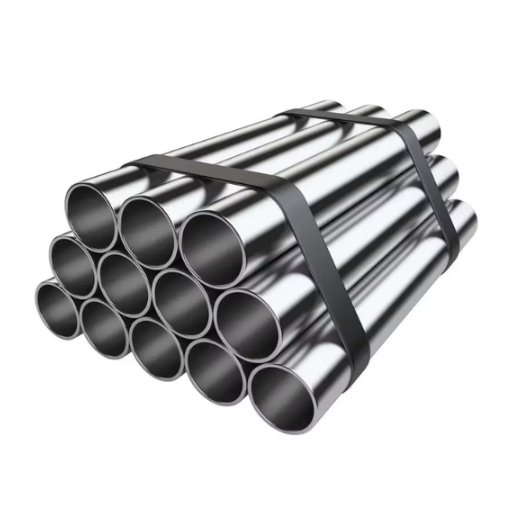
Emerging Uses of 202 Stainless Steel
The versatility of 202 stainless steel continues to open new application areas:
- Sustainable Architecture: Green building projects utilizing its corrosion resistance and affordability
- Precision Engineering: Lightweight machinery and precision tools benefit from a high strength-to-weight ratio
- Medical Applications: Surgical tools and medical apparatus requiring hygiene and structural durability
- Consumer Goods: Kitchen appliances, furniture, and automotive trims with aesthetic value
Future Developments in Stainless Steel Manufacturing
The stainless steel industry is experiencing significant technological advancement:
- Advanced Manufacturing: Powder metallurgy and additive manufacturing for complex parts
- AI Integration: Machine learning optimization for raw material usage and maintenance prediction
- Environmental Sustainability: Electric arc furnaces and increased recycling activities
- Alloy Development: Research into green alternatives and enhanced performance characteristics
Frequently Asked Questions
What is 202 stainless steel?
202 stainless steel is an austenitic stainless steel from the 200 series, characterized by high manganese content and a combination of chromium, nickel, and manganese. It’s used in various applications, including kitchenware and structural components.
What are the main differences between 202 and 304 stainless steel?
The primary differences lie in chemical composition: 304 has higher nickel content (8-10.5% vs 4-6%), providing better corrosion resistance and formability, while 202 has higher manganese content (7-10%), offering greater strength at a lower cost.
What are the mechanical properties of 202 stainless steel?
202 stainless steel typically exhibits tensile strength of about 550 N/mm², yield strength of approximately 240 N/mm², good weldability, and work hardening properties suitable for various fabrication processes.
Is 202 stainless steel magnetic?
In its annealed condition, 202 stainless steel is largely non-magnetic. However, it can develop magnetic characteristics after work hardening or welding due to structural changes during these processes.
How does 202 stainless steel perform in terms of corrosion resistance?
202 stainless steel offers moderate corrosion resistance, suitable for mildly corrosive environments. However, it has lower resistance to pitting and crevice corrosion compared to grades like 304 and 316.
Can 202 stainless steel be used in food processing?
Yes, 202 stainless steel is widely used in food processing applications due to its good mechanical properties and fair corrosion resistance. However, specific food industry requirements should be evaluated, as 304 may be preferable for enhanced safety.
What are the major applications of 202 stainless steel?
Common applications include kitchen utensils, cookware, appliances, structural components in construction, industrial equipment, and decorative architectural elements where cost-effectiveness is important.
How does heat treatment affect 202 stainless steel?
Heat treatment significantly impacts 202 stainless steel. Annealing improves ductility and corrosion resistance, while other treatments can increase strength. The specific treatment should be chosen based on the desired mechanical properties for the application.
References
Experimental Investigation of the Friction Coefficient and Wear Rate of Stainless Steel 202
This paper studies the wear and friction behavior of stainless steel 202 compared to stainless steel 304.
Surface Modification of Stainless Steel for Advanced Functionalities
This paper discusses different stainless steels, including 202, and their production and applications around the world.
Weldability Issue of AISI 202 Stainless Steel Grade with GTAW Process Compared to AISI 304
In the study, the weldability and mechanical properties of 202-grade stainless steel vis-à-vis 304 stainless steel are considered.

